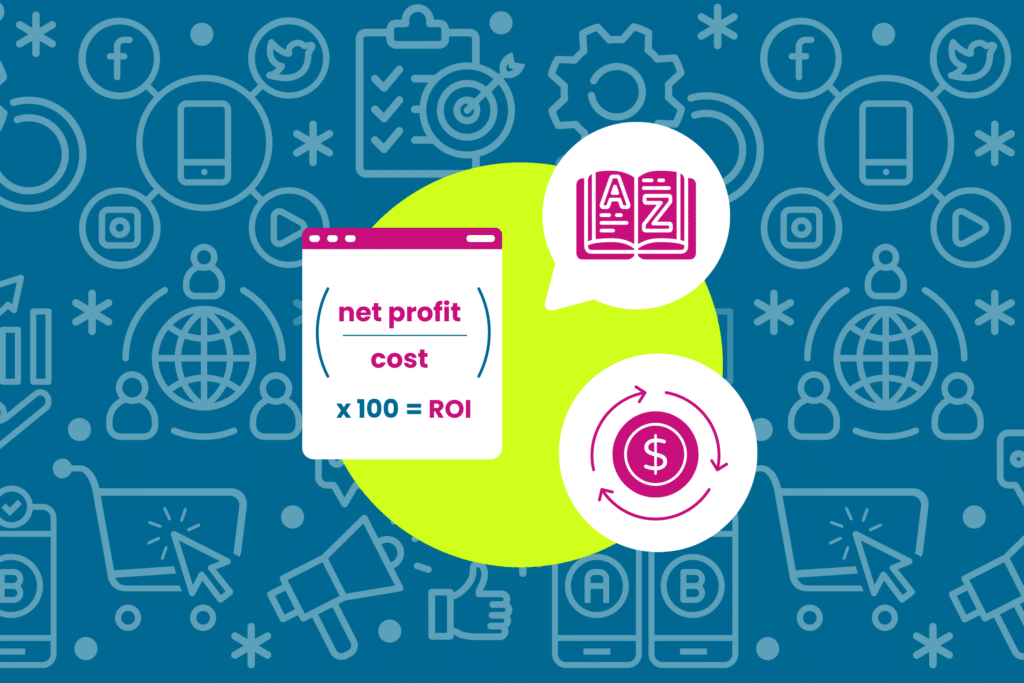In the world of social media advertising, return on ad spend (ROAS) is often the main reporting metric brands care about. While it’s true that ROAS provides a peek into a current or sometimes immediate return on investment, it doesn’t show how your paid social media campaigns are impacting your bottom line.
- Facebook metrics that make a difference
- Using CPM to influence paid social media performance
- Click-through rates that tell a customer story
- Testing AOV with product-specific ads
- Influencing CVR to drive sales
- Take your brand to the next level with a paid social media agency
Making small optimizations over time that are based on the end goal is a good practice for many digital marketing and advertising strategies. But in paid social media, focusing on the metrics you can influence often makes a stronger impact on your campaigns and allows you to use resources more efficiently. In most cases, performing small and quick tests on your Meta Ads account will help you learn fast and figure out where you need to spend more time.
Facebook Metrics that Make a Difference
Understanding how to leverage metrics like CPMs, CTR, AOV, and CVR is the key to improving your Meta Ads account. But what are these metrics, what do they mean, and how do they influence your performance? Here’s our breakdown:
- CPM (cost per mille): A marketing formula that calculates the total price an advertiser pays per 1,000 ad impressions. An “impression” simply refers to when someone sees the ad on Meta
- CTR (click-through rate): A data point that reports how often people click on your ad. This metric helps you understand the level of interest your brand and products have across various content and ad placements
- AOV (average order value): Tracks the average amount of dollars spent each time a customer places an order
- CVR (conversation rate): Measures how many people are persuaded to make a purchase based on their engagement with your brand, such as watching a video ad on Instagram or clicking through a product ad on Facebook
Using CPM to Influence Paid Social Media Performance
As mentioned, CPM refers to how much you’ll pay for every 1,000 ad impressions. When you’re looking to influence this metric on Meta, you first need to make sure the right ads are being served to the right audience at the right time in the right placements, then compound many smaller changes within your account.
One of the most effective ways to influence CPM is by focusing on increasing your CTR. Running small tests, like the following, will help you quickly understand what’s working, what needs improvement, and what’s dragging down your CTR:
- Audience testing. Serve the same campaign to both your currently defined audience and to new niche, targeted, and/or broad audiences. Compare your typical audience with these new groups to see which performs best.
- Creative format testing. Try ads that use video, still images, GIFs, collections, and carousels to find out which format provides the desired results for your account.
- A/B testing. Create an ad group made up of individual ads that have the highest CTR in your account. Test the ads against one another to a single broad audience to see which ad carries the highest CTR.
Another key way to influence CPM is to strategize ad placements. If your ads aren’t strategically placed, like in the positions listed below, your target audience may not see them.
- Placed at the middle, top, or bottom of a Facebook and/or Instagram feed
- Sent via Messenger
- Shown in mobile and / or desktop resolutions
Nailing your ad placement is just one way to make sure Meta’s AI delivers them effectively. Making these changes will tell you which ad is reaching and retaining the most customers — and why.
Click-through Rates that Tell a Customer Story
Along with using CTR to influence CPM, CTR in and of itself is one of the most important metrics to help you understand and learn from your customers. However, improving your click-through rate is easier said than done.
When you’re looking to influence this metric, it should be approached carefully; you’ll find the real impact happens when you test varied creative, copy, and formats. Applying your test results to your ad strategy can trigger lower CPMs, which creates a lower CPA and a higher return on ad spend. These few tests can help boost your CTR:
- Creative composition testing. Test different camera angles and let the creative dictate your targeting.
- Interest audience targeting. You can also use interest audience targeting and tailor copy and creative to the audiences, but sometimes your CPMs will increase to the point where the higher CTR does not balance out.
- Creative format testing. This strategy can also be a way to see a small boost in CTR because the higher converting audiences may often resonate more with one ad format over another. Simply create a testing ad set; test five-to-six different creative formats against each other to find the winning format.
Testing AOV with Product-specific Ads
Your AOV tracks the amount of dollars spent each time a customer places an order, and its amount will influence both ROAS and CPA. Attempting to make changes to your AOV can be tricky, as it can both help and hurt your metrics. For an example, we’ll use targeting an affluent audience:
- If you target an audience that expects the highest and best quality, and is willing to pay a premium price, you will likely experience higher CPMs
- If you test and send traffic to lower AOV products, CVR will increase
- If you test and send traffic to higher AOV products, it generally decreases CVR
Continuously testing your AOV is important because the rules for how to influence your average order value aren’t set in stone — they fluctuate. You will find that you will likely test AOV with other Facebook metrics experiments, and it is most beneficial when introducing a new product.
That being said, product testing is a great example of how to influence your AOV because your ad creative will be tailored to specific products and not designed to promote your brand as a whole. You will be able to conduct focused experiments around these product-specific ads, which will quickly tell you what’s working and what’s not.
Catalog ads may also be a good medium for product testing. Try creating two separate product sets (one high AOV and the other low AOV) to ensure that the low AOV products don’t get all the spend in your campaign budget.
Influencing CVR to Drive Sales
Conversion rate, or CVR, is all about leading your audience to take a desired action — like adding an item to their cart cart or checking out. You can learn a lot about what’s influencing your CVR, as well as where to make improvements, by looking at your landing pages and ad copy. These various experiments can be run to help you better understand your CVR today, and where you need to spend time on making improvements.
- Landing page testing. This includes homepage, collection pages, and specific product description pages and tells you which page yields the highest CVR by product. Once this is established, you can add that page into evergreen campaigns to continue to drive CVR and sales.
- Audience testing. This type of test is ideal because it helps you learn more about who is buying your products, so you can keep messaging, creative, and landing pages on point and targeted to these shoppers. When audience testing yields positive results, you can feel confident in continuing to run the campaign unless performance drops.
- Creative format testing. Like it does for other Facebook metrics, creative format testing also affects CVR because you can learn which format attracts audiences that convert and drive sales.
- Ad set split testing. To increase CVR, you can create a split test between two ad sets with the same product. Then, you send those ads to a collection and product description page. Don’t make any quick assumptions after you publish the ads, though, because they will be put into Learning Phase to allow Meta to learn about the ad set and deliver it to your desired audience. The ads need to run until each has exited this phase (i.e., enough time and spend have gone through the ads) and has had enough time to run normally.
- After the set exits Learning Phase, continue to run it for at least seven days to ensure you get delayed attribution. After your test ends, you can determine which landing page provided the highest CVR so you can make the most appropriate optimizations to your evergreen ads.
Take Your Brand to the Next Level with a Paid Social Media Agency
With the constant changes happening in Meta and the advertising ecosystem as a whole, it’s important to allocate at least 10% of your budget for regular testing. Doing so allows you to reap the benefits of ideal performance in your account.
However, we know that testing can be a burden on you and your team: It’s time-consuming to manage and may not yield the desired results if experiments are not set up correctly. Lean on the Omnitail Paid Social & Creative team as your paid social media agency. We’ll take your brand to the next level on Meta, Pinterest, Reddit, and more, and take on the task of managing your accounts — including all the testing. Request a free paid social account audit today to learn more.








